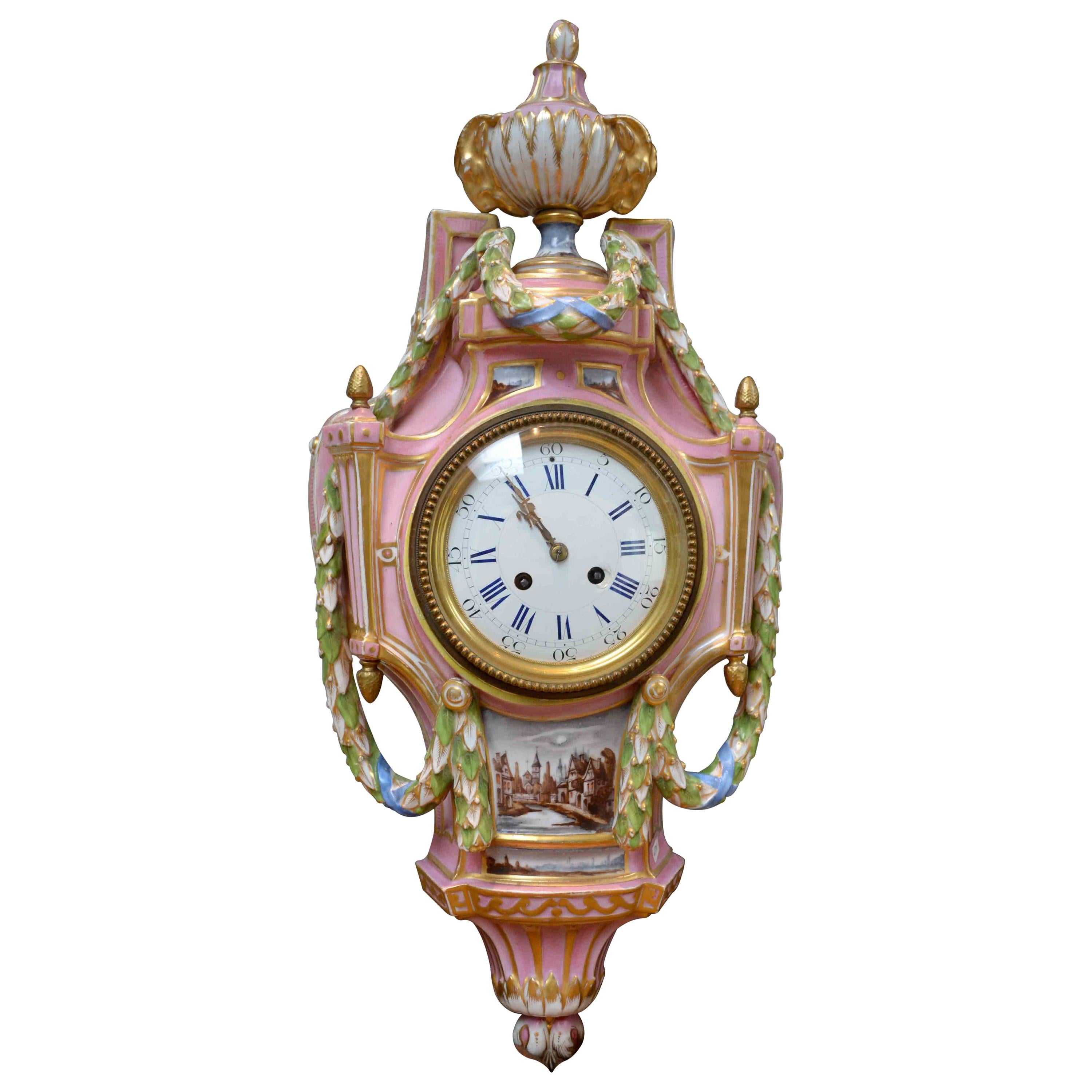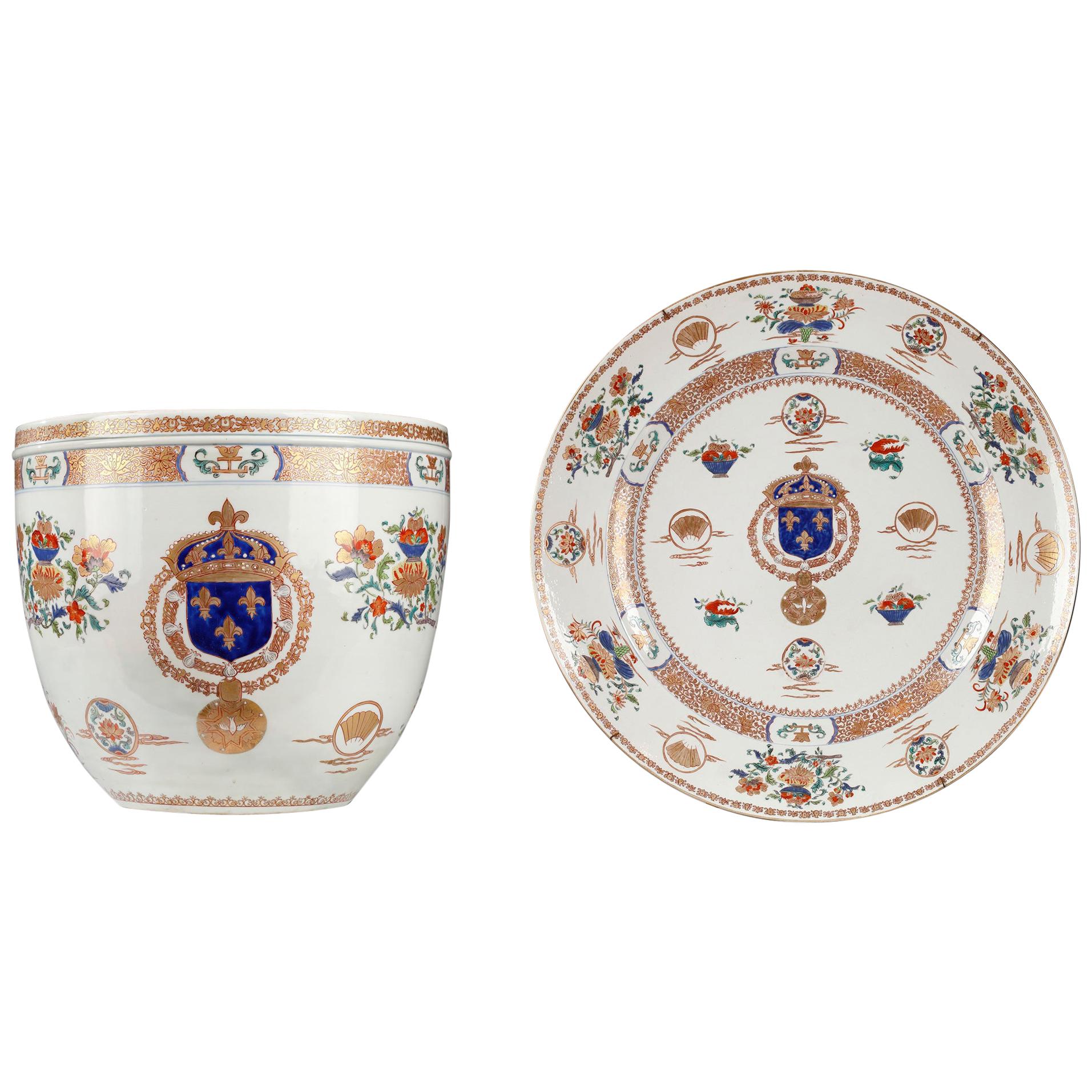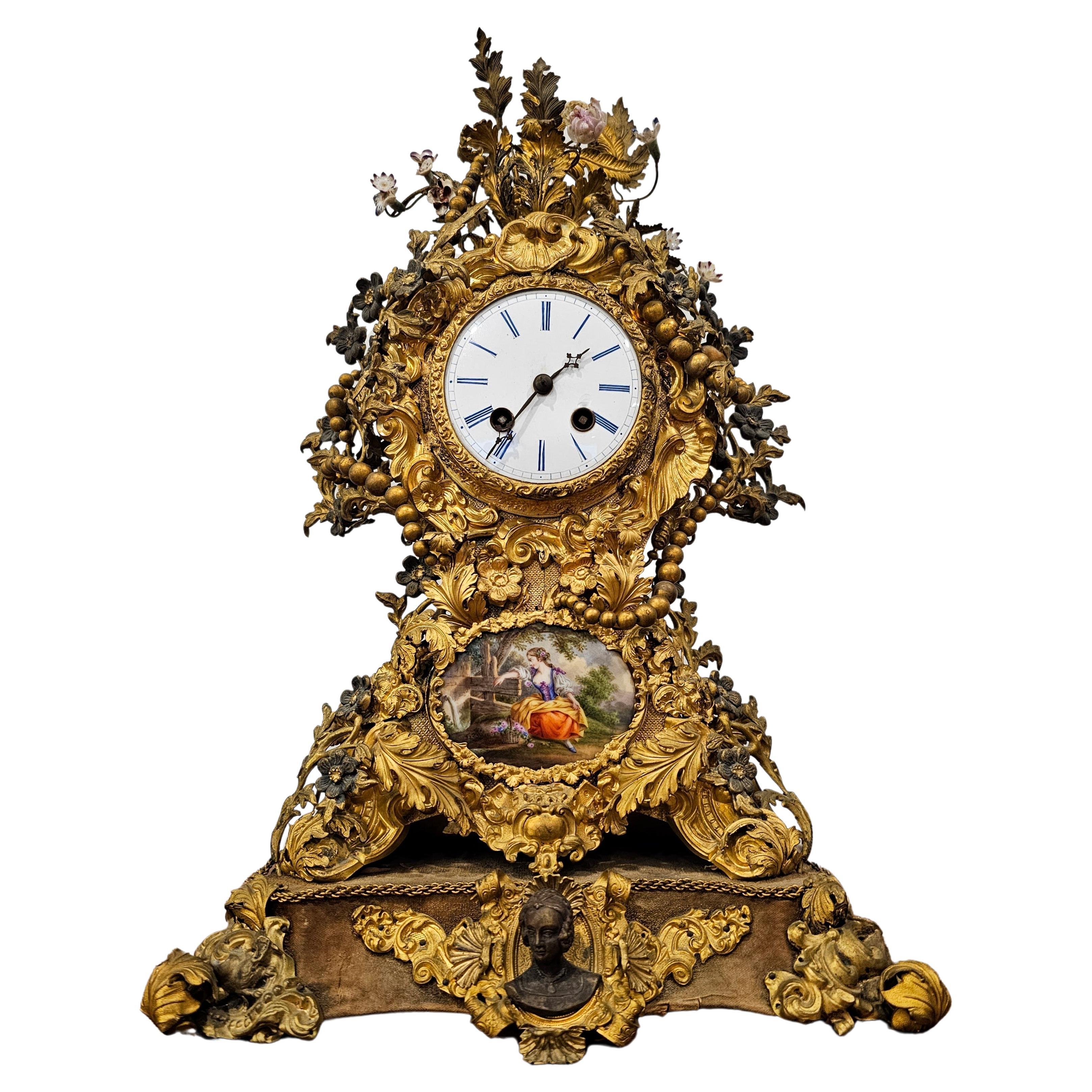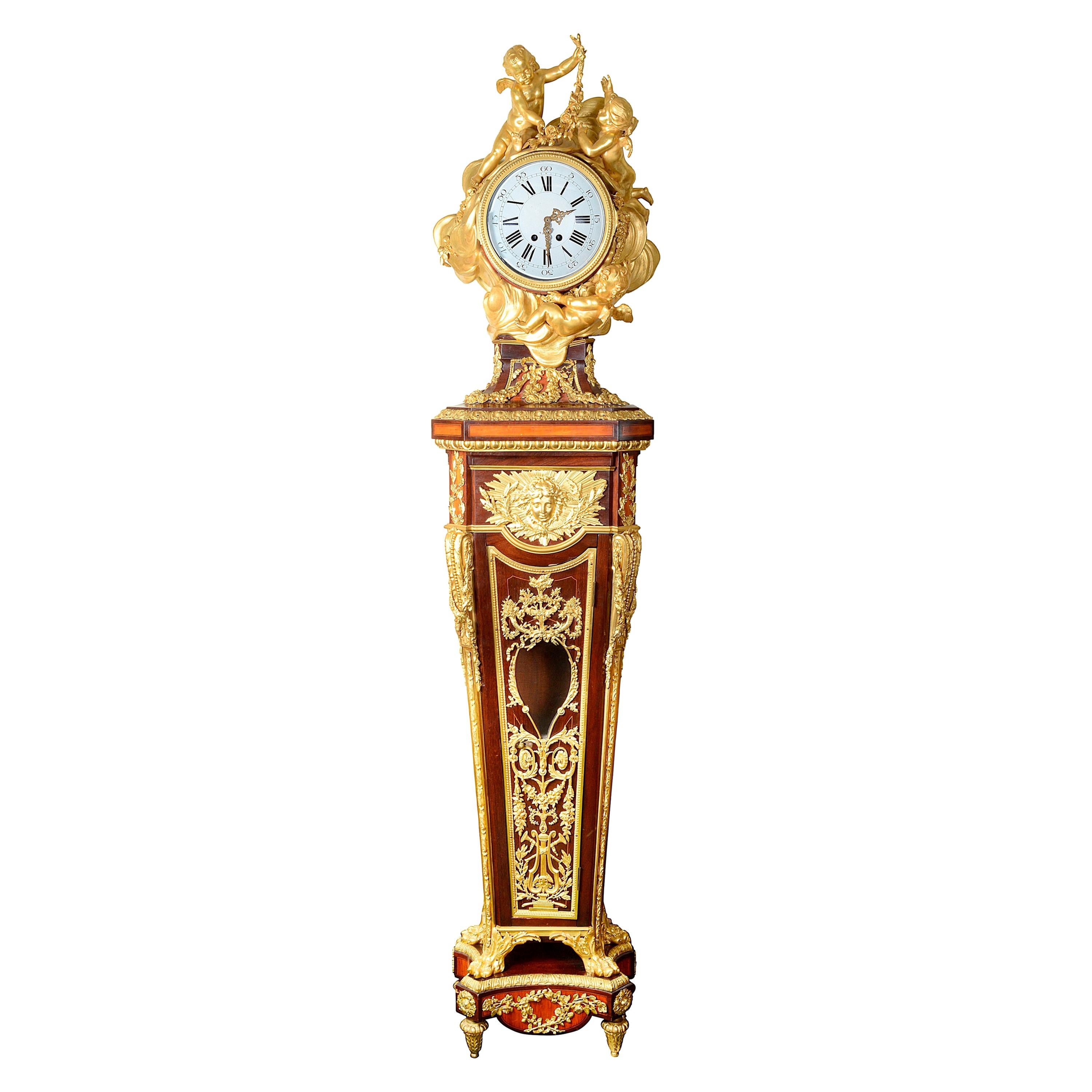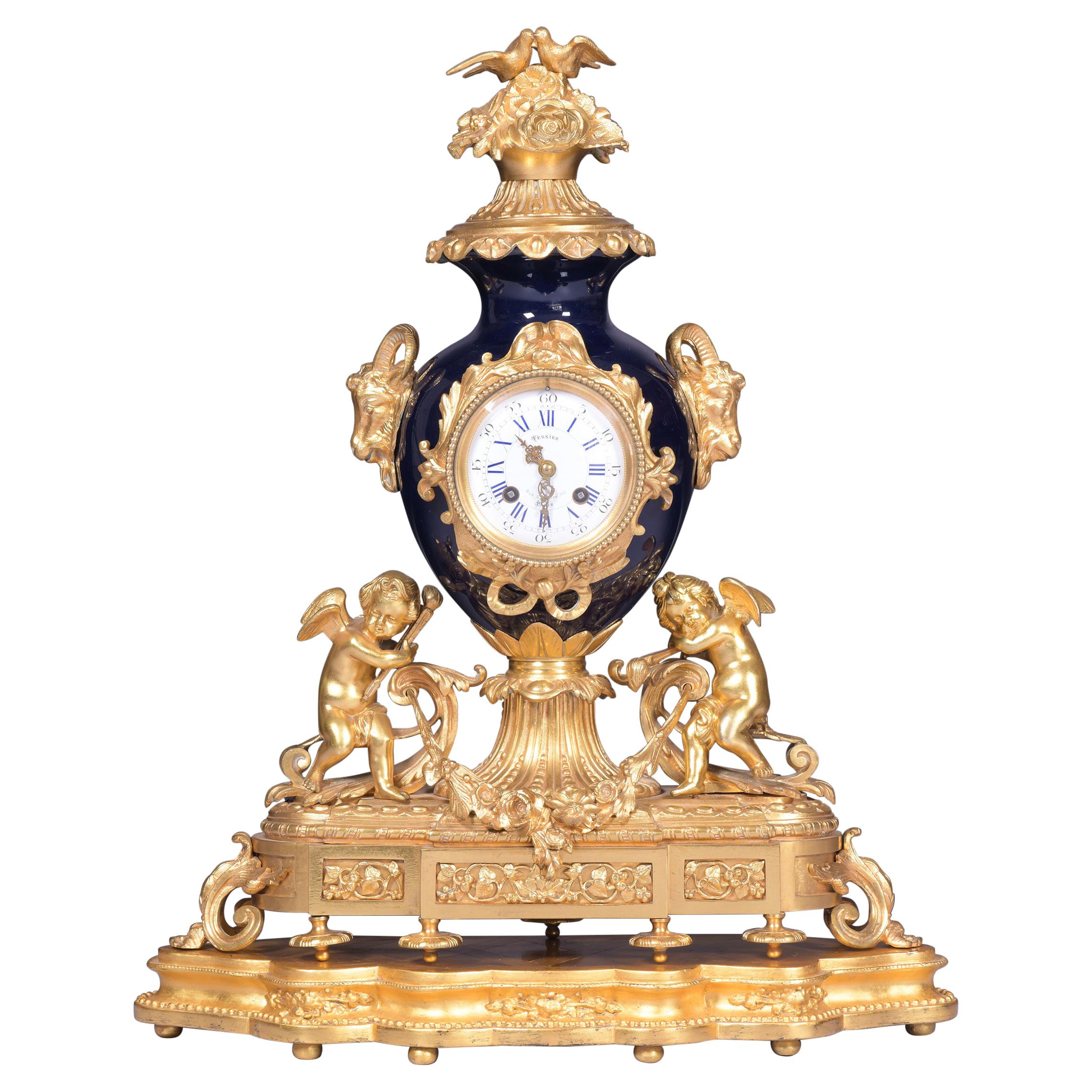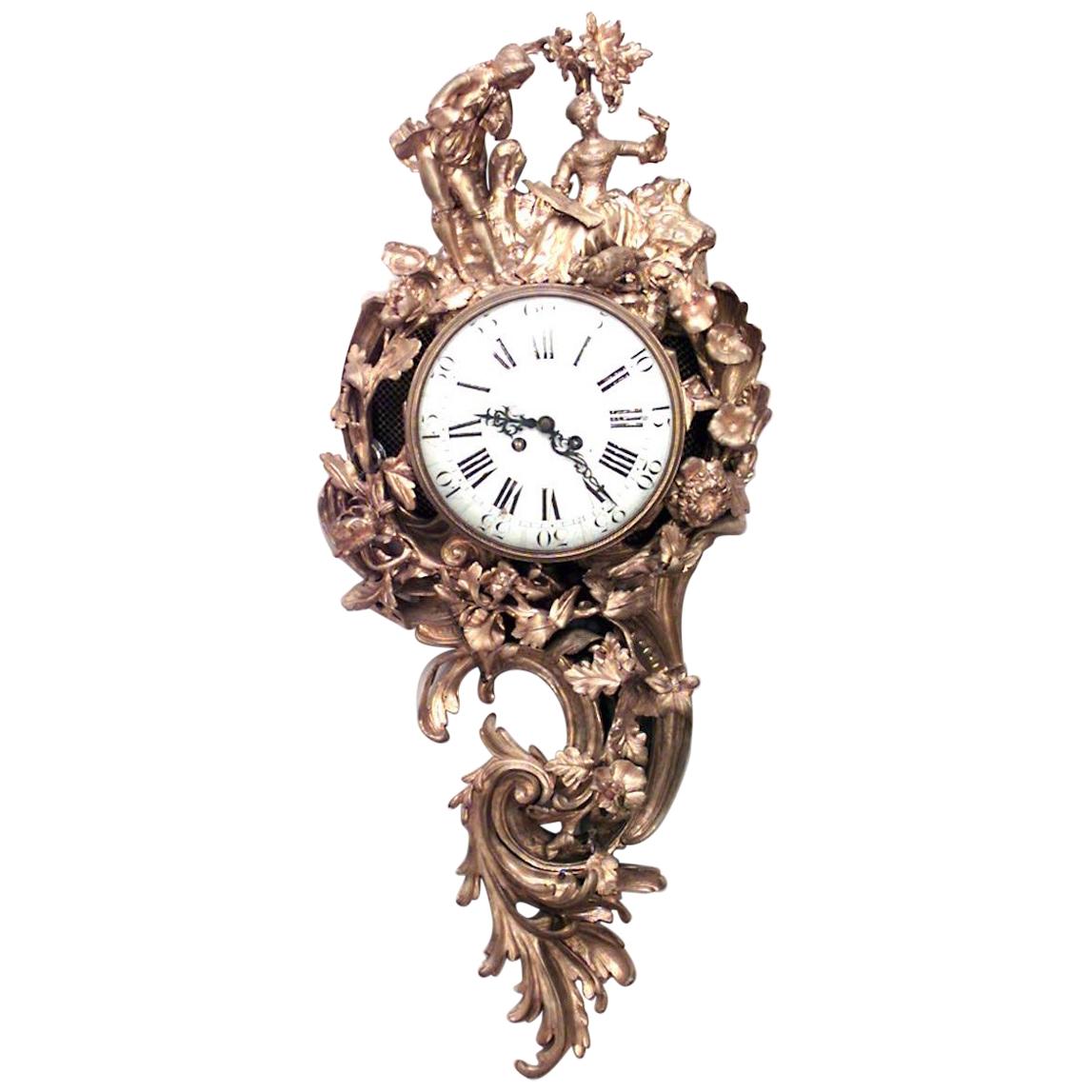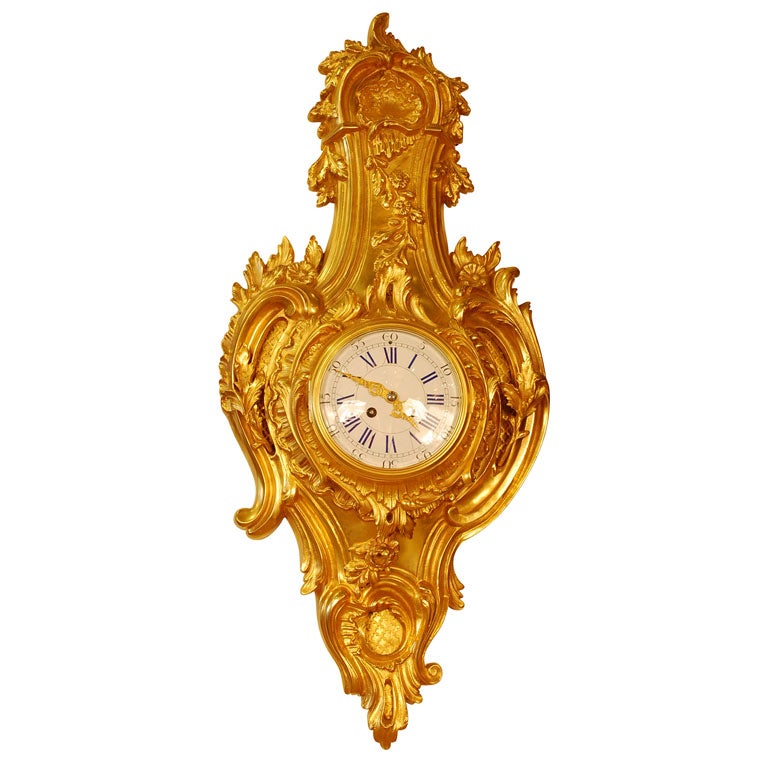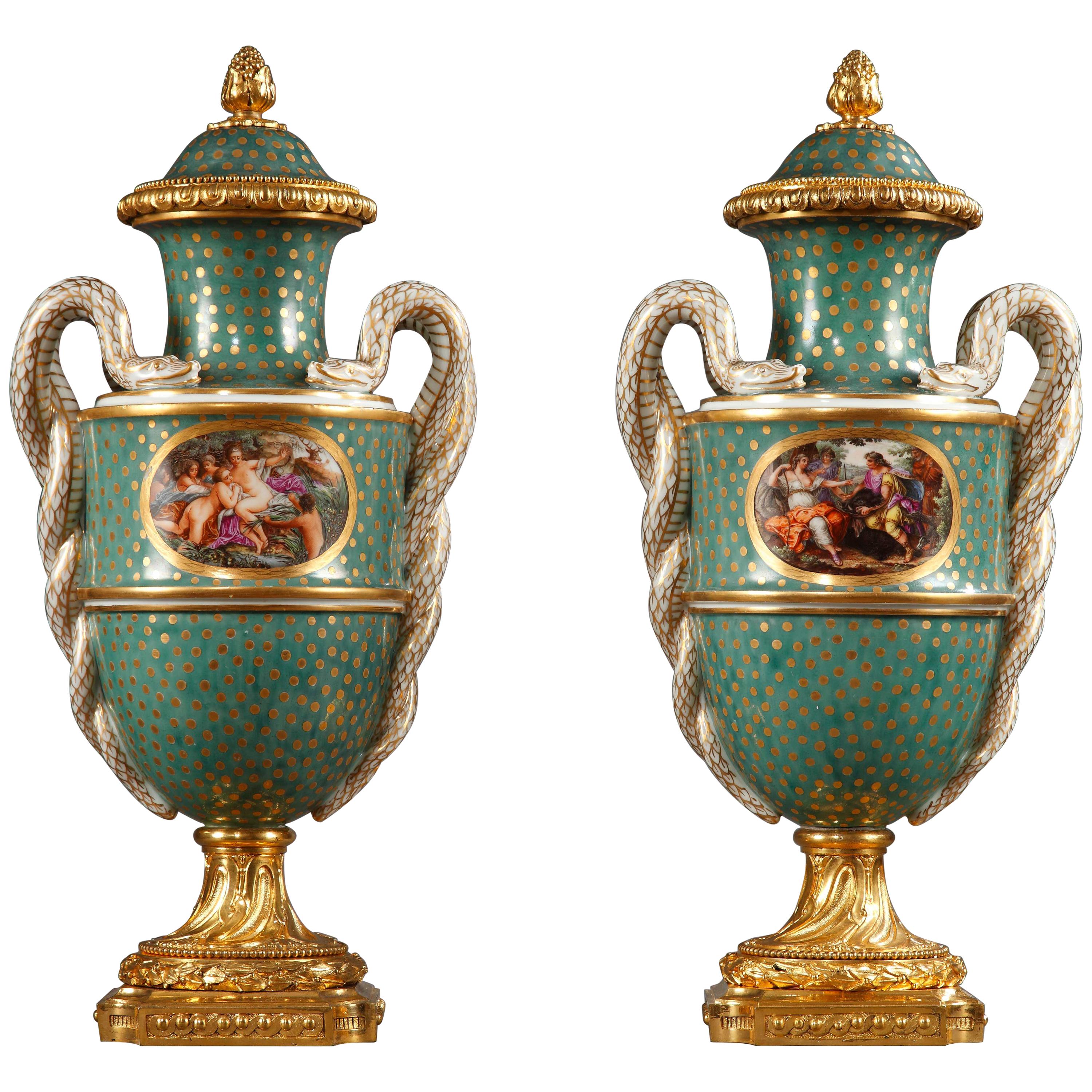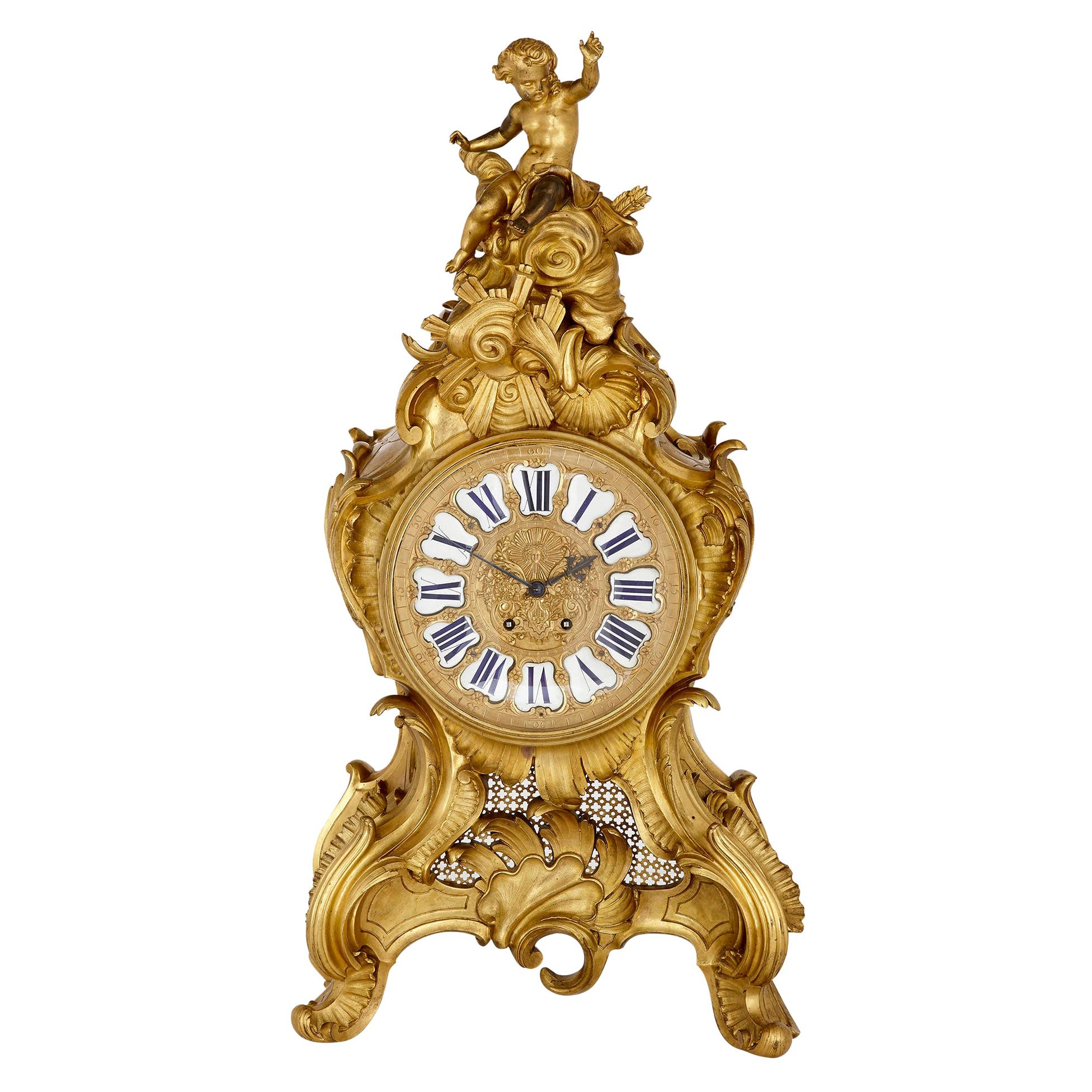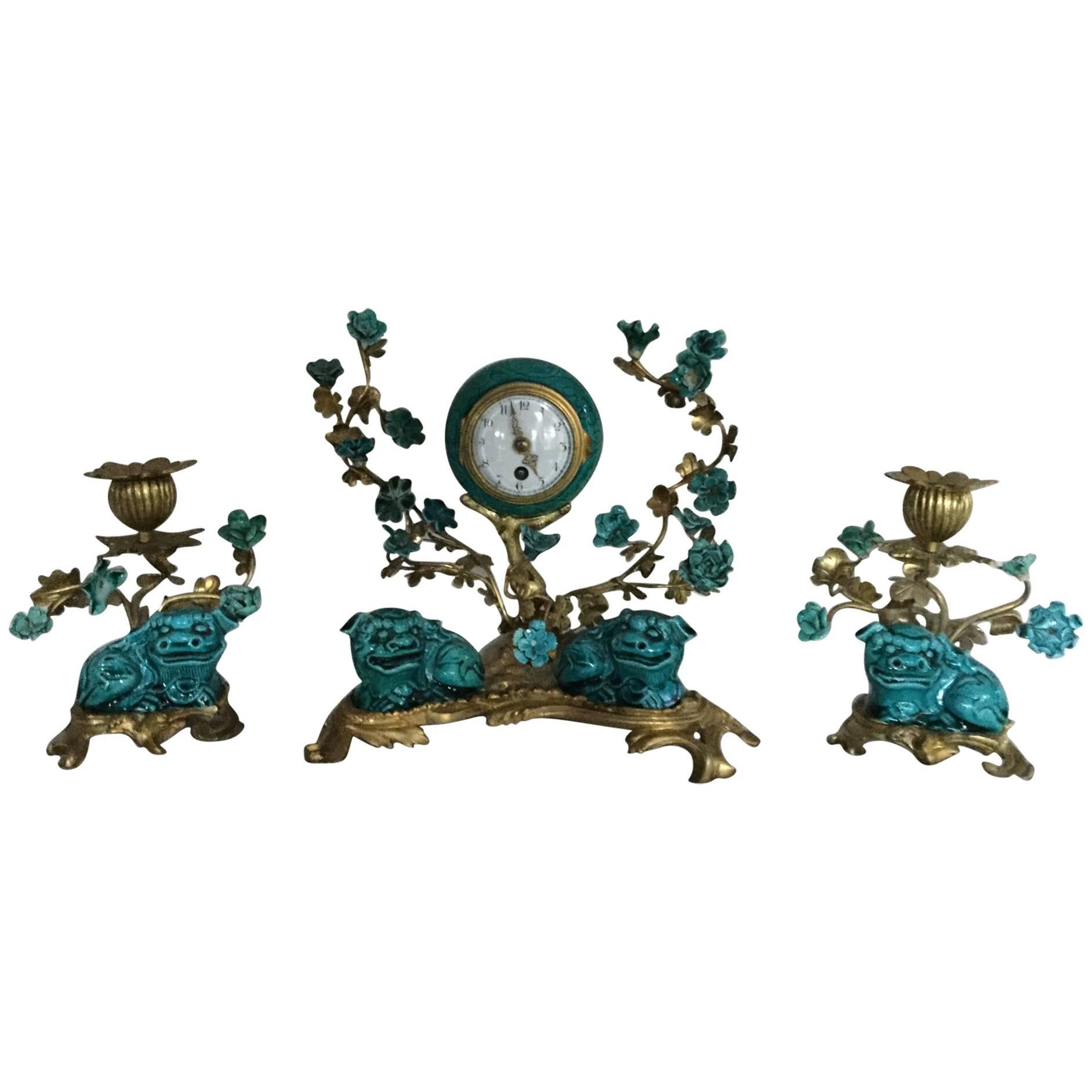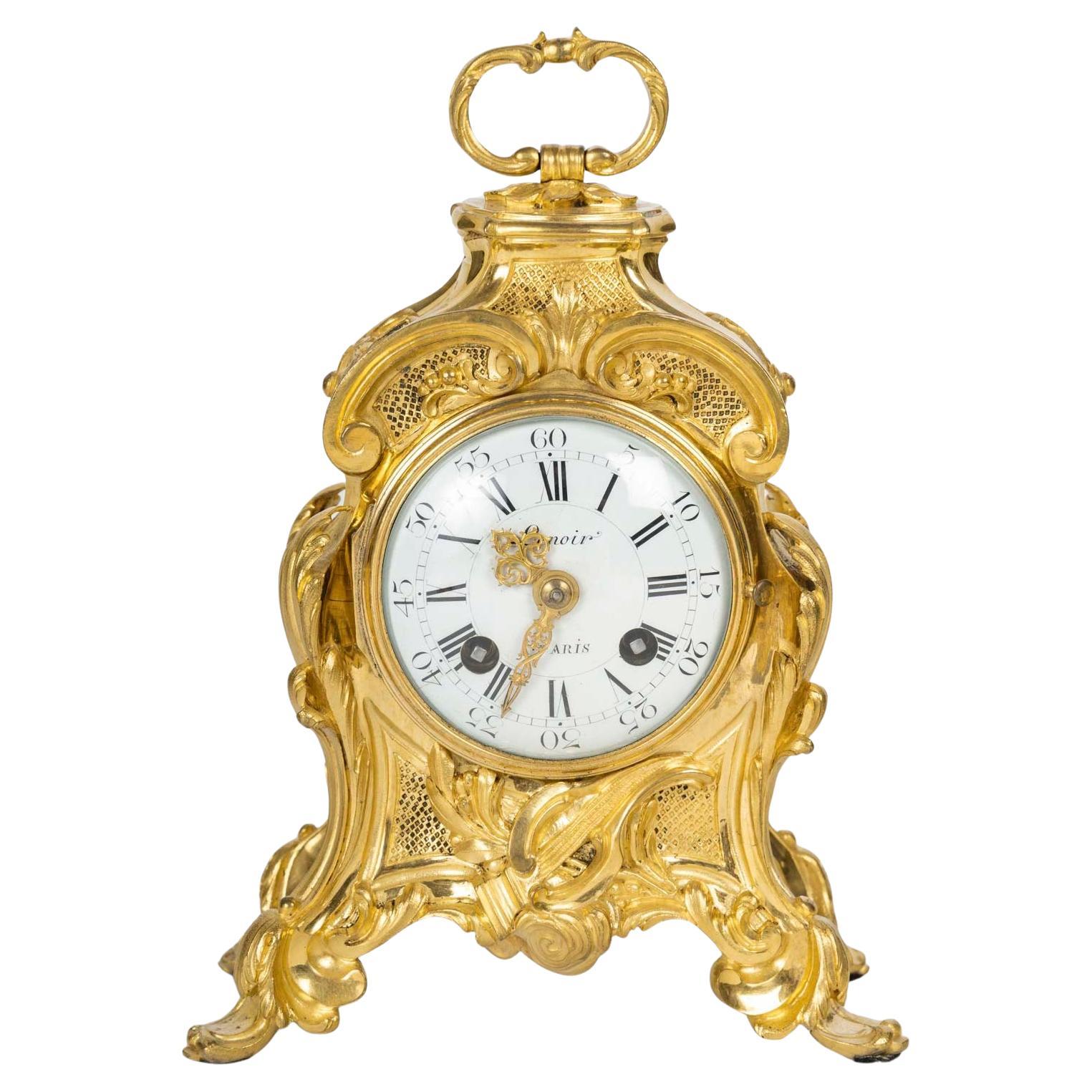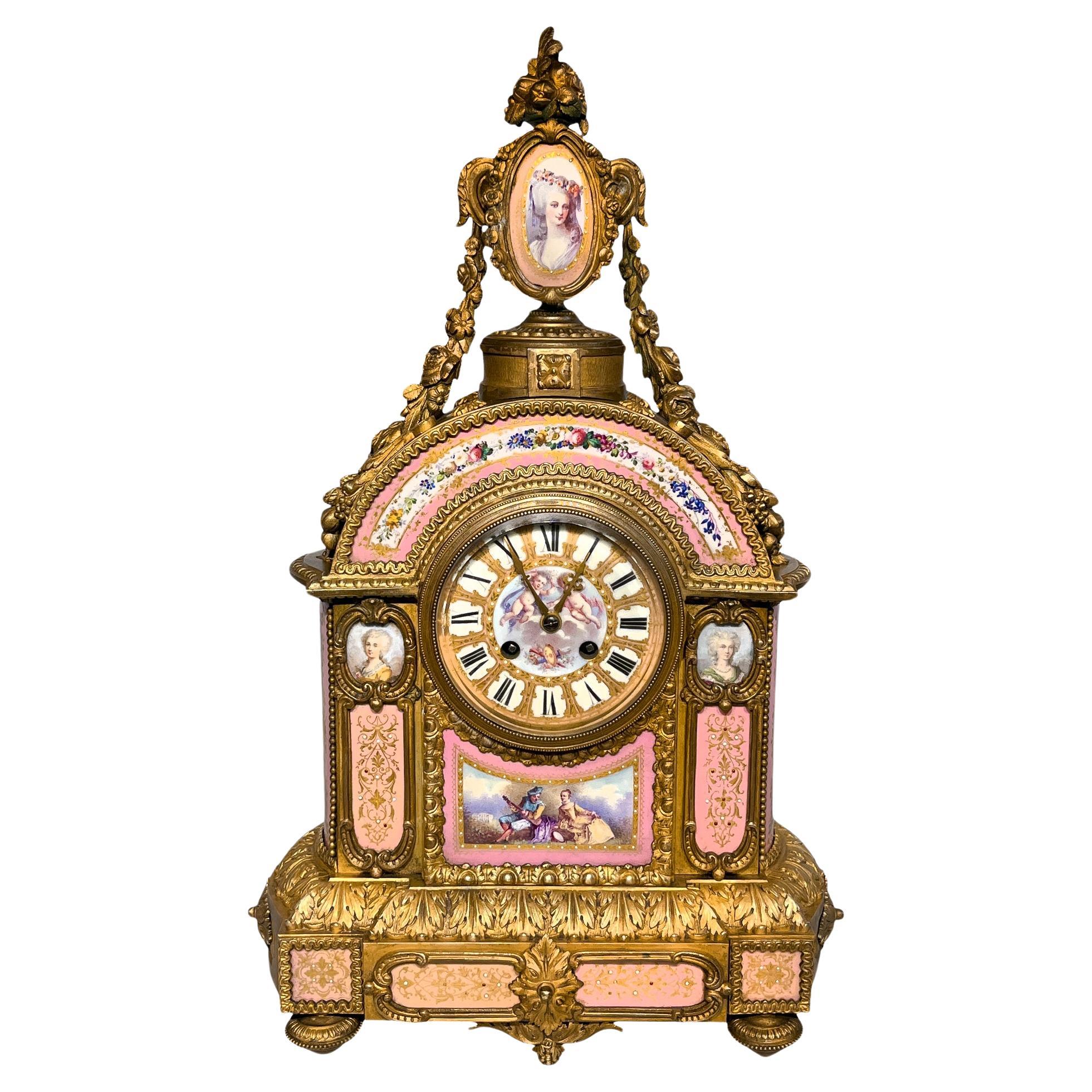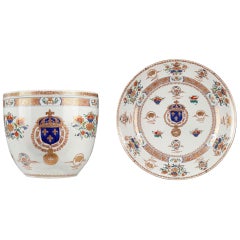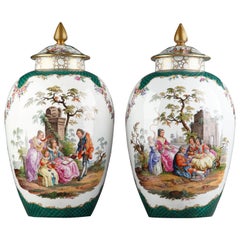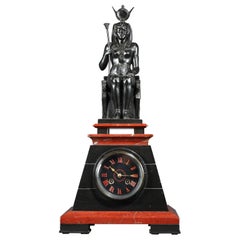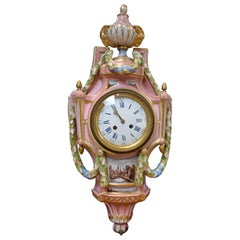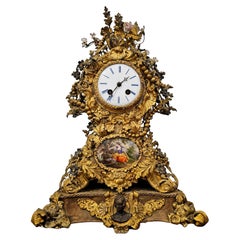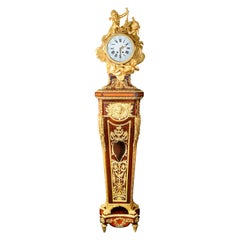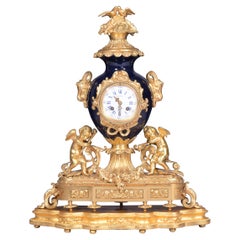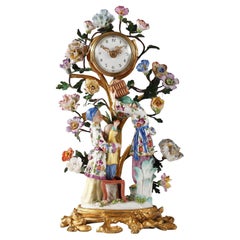
Louis XV Style Porcelain Clock Attributed Samson & Cie, France, circa 1880
View Similar Items
Want more images or videos?
Request additional images or videos from the seller
1 of 8
Louis XV Style Porcelain Clock Attributed Samson & Cie, France, circa 1880
About the Item
- Attributed to:Samson & Cie (Manufacturer)
- Dimensions:Height: 11.03 in (28 cm)Width: 5.91 in (15 cm)Depth: 4.93 in (12.5 cm)
- Style:Louis XV (In the Style Of)
- Materials and Techniques:
- Place of Origin:
- Period:
- Date of Manufacture:circa 1880
- Condition:Wear consistent with age and use.
- Seller Location:PARIS, FR
- Reference Number:Seller: 1444/61stDibs: LU3860327248832
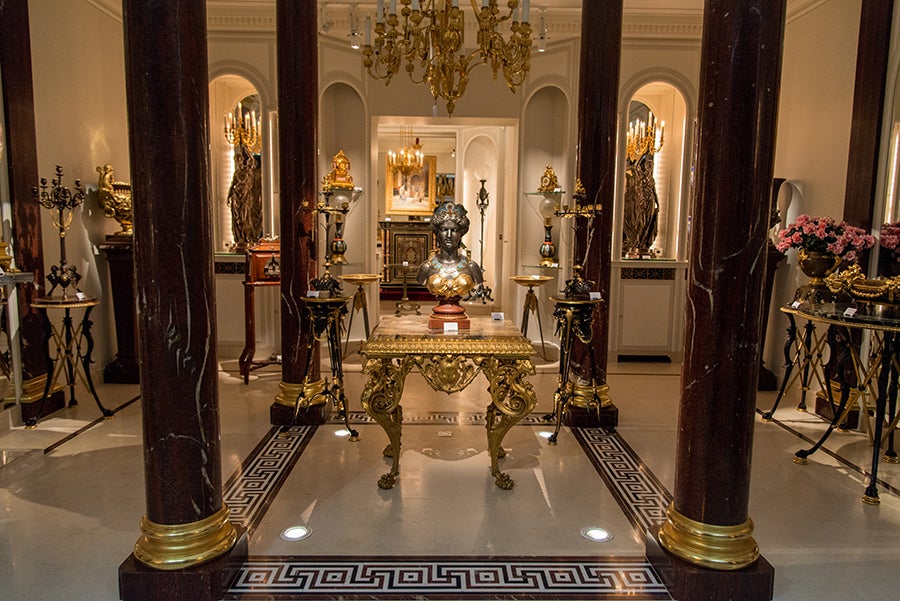
About the Seller
4.9
Gold Seller
Premium sellers maintaining a 4.3+ rating and 24-hour response times
Established in 1997
1stDibs seller since 2018
85 sales on 1stDibs
Typical response time: 1 hour
Associations
International Confederation of Art and Antique Dealers' Associations
Authenticity Guarantee
In the unlikely event there’s an issue with an item’s authenticity, contact us within 1 year for a full refund. DetailsMoney-Back Guarantee
If your item is not as described, is damaged in transit, or does not arrive, contact us within 7 days for a full refund. Details24-Hour Cancellation
You have a 24-hour grace period in which to reconsider your purchase, with no questions asked.Vetted Professional Sellers
Our world-class sellers must adhere to strict standards for service and quality, maintaining the integrity of our listings.Price-Match Guarantee
If you find that a seller listed the same item for a lower price elsewhere, we’ll match it.Trusted Global Delivery
Our best-in-class carrier network provides specialized shipping options worldwide, including custom delivery.More From This Seller
View AllPlanter and Decorative Dish Attributed to Samson & Cie, France, Circa 1880
By Samson & Cie
Located in PARIS, FR
Important porcelain planter and decorative dish attributed to Samson & Cie.
They are decorated with golden and red friezes of intertwined lotus, fruits and flower cups, fans and two...
Category
Antique 1880s French Planters, Cachepots and Jardinières
Materials
Porcelain
Pair of Louis XVI Style Covered Vases Attributed to Samson & Cie, France, c.1890
By Samson & Cie
Located in PARIS, FR
Pair of Louis XVI style baluster shaped covered vases attributed to Samson & Cie, made in porcelain with green background and gold dots, flanked by two applied handles made of white ...
Category
Antique 1890s French Louis XVI Vases
Materials
Bronze
$7,344 Sale Price / set
46% Off
Impressive Pair of Vases with Covers Attributed to Samson & Cie, France, c. 1890
By Samson & Cie
Located in PARIS, FR
Bearing the mark AR interlaced
A pair of large Chinese style white porcelain baluster shaped vases and covers attributed to Samson & Cie. Each finely painted with polychrome 18th c...
Category
Antique 1890s French Vases
Materials
Porcelain
Neo-Egyptian Marble Clock Attributed to G. Servant, France, Circa 1870
By Georges Emile Henri Servant
Located in PARIS, FR
Black and red marble pyramid shaped Egyptian style clock attributed to G. Servant, surmounted by a patinated bronze figure representing the Egyptian goddess Isis sitting on her throne. Wearing the Hathor hairdress (the solar disc surrounded by the sacred cow horns), she holds in her right hand the Ouadj, the goddesses scepter surmounted by a canopy of papyrus, symbolizing health and eternal youth and in her left hand, the cross of life Ankh, symbol of rebirth and eternity.
That Egyptian style in fashion since Napoleon the First and his military campaigns in Egypt around 1799 was rediscovered in France in the 1830's and above all in the 1860's. Some renowned French artists, such the sculptors and bronze-casters Guillaume Denière (1815-1903), Emile Hébert (1828-1893) et Georges Servant (1828-1890), presented at the 1867 and 1878 Paris Universal Exhibitions, an a-part section dedicated to their Egyptian style production. Their shows drew then considerable attention from the public and the wealthy collectors. During the 1867 Universal Exhibition, one could admire the Stand realized by the French silversmith-jeweller Gustave Baugrand (1826-1870), where his works executed in most Fine materials took inspiration from the Egyptian Antiques, exhibited then in the Louvre museum.
Georges Emile Henri Servant (1828-c.1890), who took over his father in 1855 at their foundry, rue Vieille-du-Temple, in Paris, specialized in the production of neo-Egyptian style clocks, very popular in France since 1860’s, and also the making of Greek style decorative objects. He drew considerable attention to the high quality of his bronzes at the 1855 Paris Universal Exhibition and then at the 1862 London Exhibition. At this time Servant exported up to 40% of his production, principally to the United States, where for instance, his clocks were sold with great success by Louis Tiffany Inc. or Hamann & Roche of New York. But his success came really at the 1867 Paris Universal Exhibition, where he was awarded a gold medal for his neo-Greek and Egyptian works (Les Merveilles...
Category
Antique 1870s French Egyptian Revival Table Clocks and Desk Clocks
Materials
Marble, Bronze
Important Louis XV Style Bureau Plat Attributed to G. Durand, France, Circa 1880
By Gervais Durand
Located in PARIS, FR
Large veneered wood flat desk attributed to G. Durand, opening with three frieze drawers. Mounted with Rocaille style chiseled ormolu representing shells, foliage and flower garlands. Raised on four cabriole legs ornamented with chiseled ormolu.
This flat desk is inspired by the one executed by the cabinet-maker Joseph Baumhauer, which was offered by King Louis XV to Empress Elisabeth...
Category
Antique 1880s French Louis XV Desks and Writing Tables
Materials
Bronze
Neo-Egyptian Bronze and Marble Clock Attributed to G.Servant, France, Circa 1870
By Georges Emile Henri Servant
Located in PARIS, FR
A black and red marble clock in the shape of an Egyptian temple attributed to G. Servant, flanked by double columns inscribed with hieroglyphs and ornated with a winged uraeus, all made in two patina bronze. The clock is surmounted by a patinated bronze sphinx. Resting on four bronze faces wearing the nemes and terminating in lion paw feet.
Georges Emile Henri Servant (circa 1828-1890) who took over his father in 1855 at their foundry, rue Vieille-du-Temple, in Paris, specialized in the production of neo-Egyptian style clocks, very popular in France since 1860s, and also the making of Greek style decorative objects. He drew considerable attention to the high quality of his bronzes at the 1855 Paris Universal Exhibition and then at the 1862 London Exhibition. At this time Servant exported up to 40% of his production, principally to the United States, where for instance, his sphinx clocks were sold with great success by Louis Tiffany Inc. or Hamann & Roche of New York (A similar clock is now exposed at the Metropolitan Museum of Art, New York). But his success came really at the 1867 Paris Universal Exhibition, where he was awarded a gold medal for his neo-Greek and Egyptian works (Les Merveilles...
Category
Antique 1870s French Egyptian Revival Mantel Clocks
Materials
Marble, Bronze
You May Also Like
French Late 19 Century Pink Porcelain Cartel Clock Attributed to Samson and Cie
By Samson & Cie
Located in Vancouver, British Columbia
A finely decorated pink porcelain Cartel clock in the Louis XVI style; the predominantly pink case surmounted by a classical urn with goats heads and colored enamel swags. Below the ...
Category
Antique Late 19th Century French Louis XVI Wall Clocks
Materials
Porcelain
$2,800 Sale Price
37% Off
French Louis XV Style Porcelain Gilt Mixed Metal Mantel Clock
Located in Forney, TX
A breathtaking antique French Belle Époque period (1871-1914) porcelain mounted mixed metal mantel clock.
Born in France in the late 19th / early 20th century, fine quality Parisian work, exceptionally executed in luxuriously opulent 18th century Louis XV Rocaille taste, finished on all sides so it can be placed anywhere in the room, featuring a visually striking sculptural floral fiolate adorned gilt metal case, heavily embellished with fine porcelain flowers...
Category
Antique Late 19th Century French Louis XV Mantel Clocks
Materials
Metal, Brass, Bronze, Enamel, Ormolu
French Louis XV Style Ormolu Grandfather Clock
By Jean-Henri Riesener
Located in Brighton, Sussex
A fine 19th century french Louis XV style ormolu-mounted mahogany grandfather clock, having wonderful gilded ormolu mounts, with three cherubs in clouds around the white and black en...
Category
Antique 19th Century French Louis XV Grandfather Clocks and Longcase Clocks
Materials
Ormolu
19th Century French Louis XV Rococo Style Ormolu & Porcelain Mantle Clock
Located in Dublin, IE
A very fine and most attractive 19th century French Louis XV Rococo Style ormolu and porcelain mantle clock, modelled as an urn with floral finial and goat head masks to the sides, o...
Category
Antique 19th Century French Louis XV Mantel Clocks
Materials
Ormolu
French Louis XV Style Bronze Dore Wall Clock
Located in Queens, NY
French Louis XV-style (19th Century) large bronze dore wall clock with two figures on top and floral trim. (Not working)
Category
Antique 19th Century Louis XV Wall Clocks
Materials
Bronze
Louis XV Style Cartel Clock
Located in Pembroke, MA
Louis XV style Cartel clock in gilt bronze with painted porcelain dial. The case has been re-gilded, and features typical rocaille ornament such as laurel leaves and berries, flowers...
Category
Antique 19th Century French Louis XV Clocks
Materials
Ormolu, Bronze
$5,600 Sale Price
35% Off
